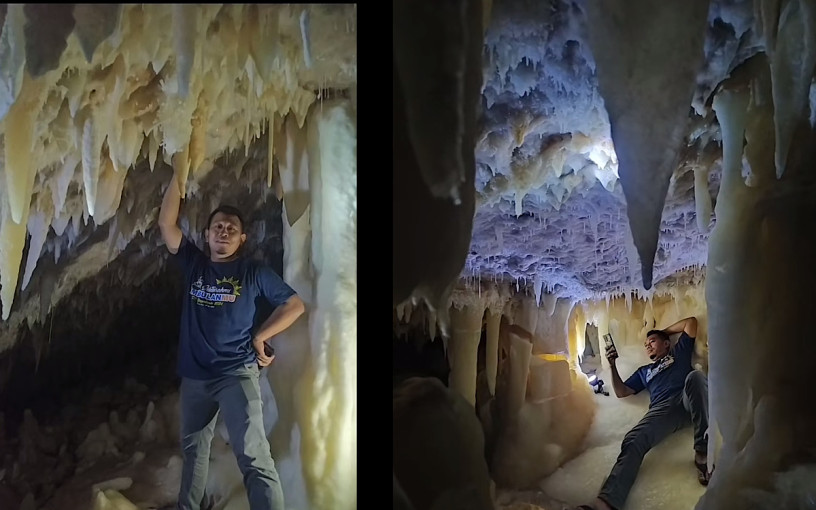
Indonesians were astonished by the discovery of an underground cave in Planjan Village, Gunungkidul Regency, Yogyakarta Province, on Oct. 15.
The cave, located in the Southern Cross Road (JJLS) construction area, contains stalactites and stalagmites estimated to be hundreds of years old, drawing significant attention from the local community.
Professor Eko Haryono from the UGM Faculty of Geography explained that the discovery of an underground cave in Gunungkidul is unsurprising, as the region is composed of karst formations.
Since the cave was revealed during excavation activities for the Southern Cross Road, Professor Haryono emphasized the importance of adjusting the project to the cave’s distribution, making an assessment essential.
“The standard operating procedures require preliminary research on the extent of the cave’s spread,” he said on Monday (Oct. 21).
Professor Haryono and his expert team plan to map the cave in November. The geomorphology expert is currently coordinating with various parties before conducting fieldwork.
“Once the cave’s distribution is known, the road design may need to be altered or shifted,” he stated firmly.
Professor Haryono mentioned that the public is excited about visiting the cave and taking photos. The cave has the potential to become a tourist attraction.
However, its carrying capacity and the number of daily visitors must be determined beforehand.
“We will examine this from a geological and geophysical perspective, measuring temperature and CO2 levels. Air circulation must be ensured for safety.”
Professor Haryono’s study will also assess initial conditions to guarantee human safety and environmental protection.
In addition to serving as a basis for road construction recommendations, the findings will be used to develop tourist paths within the cave to minimize damage to the active stalactites and stalagmites, which still show signs of water flow.
“The formation of ancient caves in Gunungkidul is estimated to be hundreds of thousands of years old, so preservation is crucial,” he explained.
Regarding cave preservation, the professor cited examples from other countries where glass enclosures are installed to protect stalactites and stalagmites, maintaining the cave’s ecosystem.
As Gunungkidul is a karst region, its porous limestone composition leads to frequent cave formations due to dissolution activities. The cave’s mouth is currently sealed with rocks to ensure the analysis can be conducted as thoroughly as possible.
Author: Bolivia
Editor: Gusti Grehenson
Photo: sumeks.co

